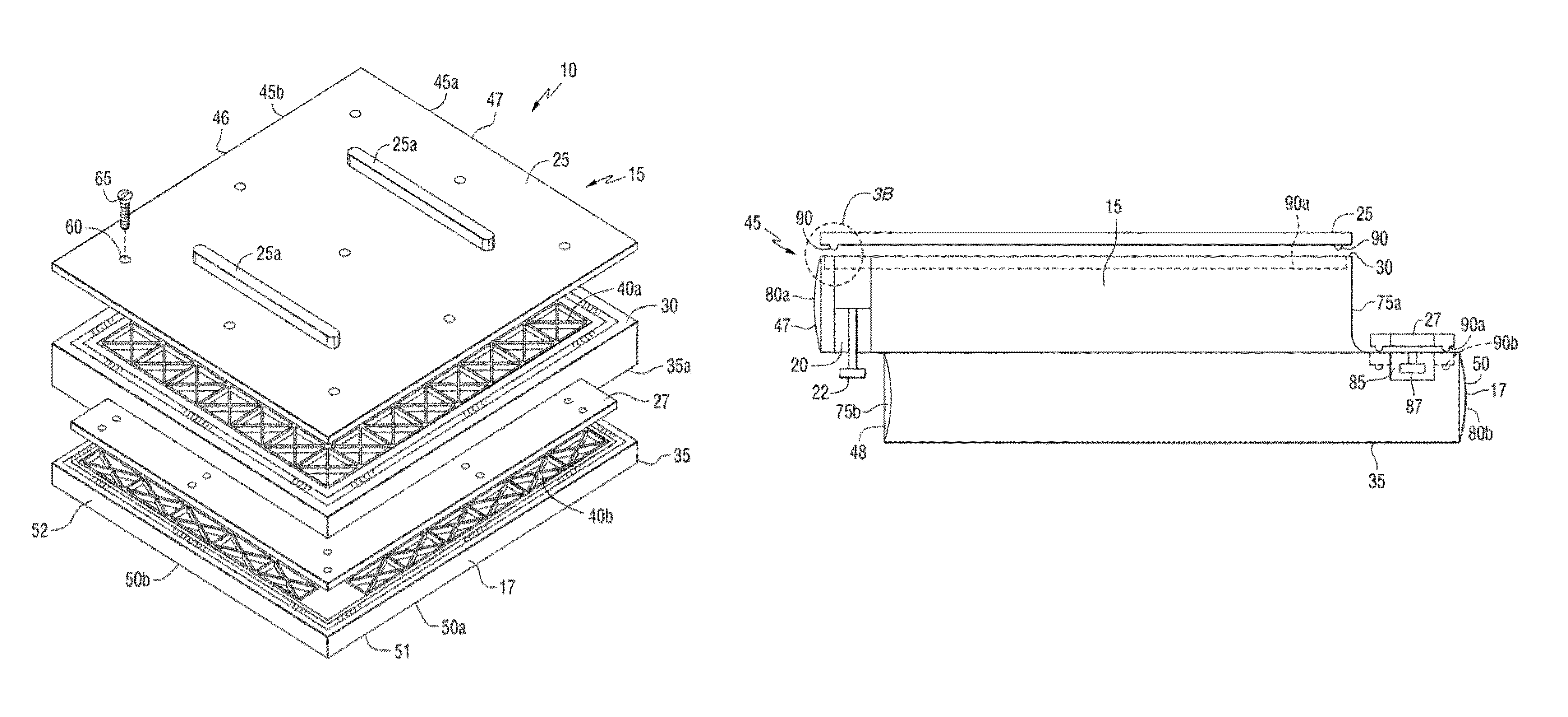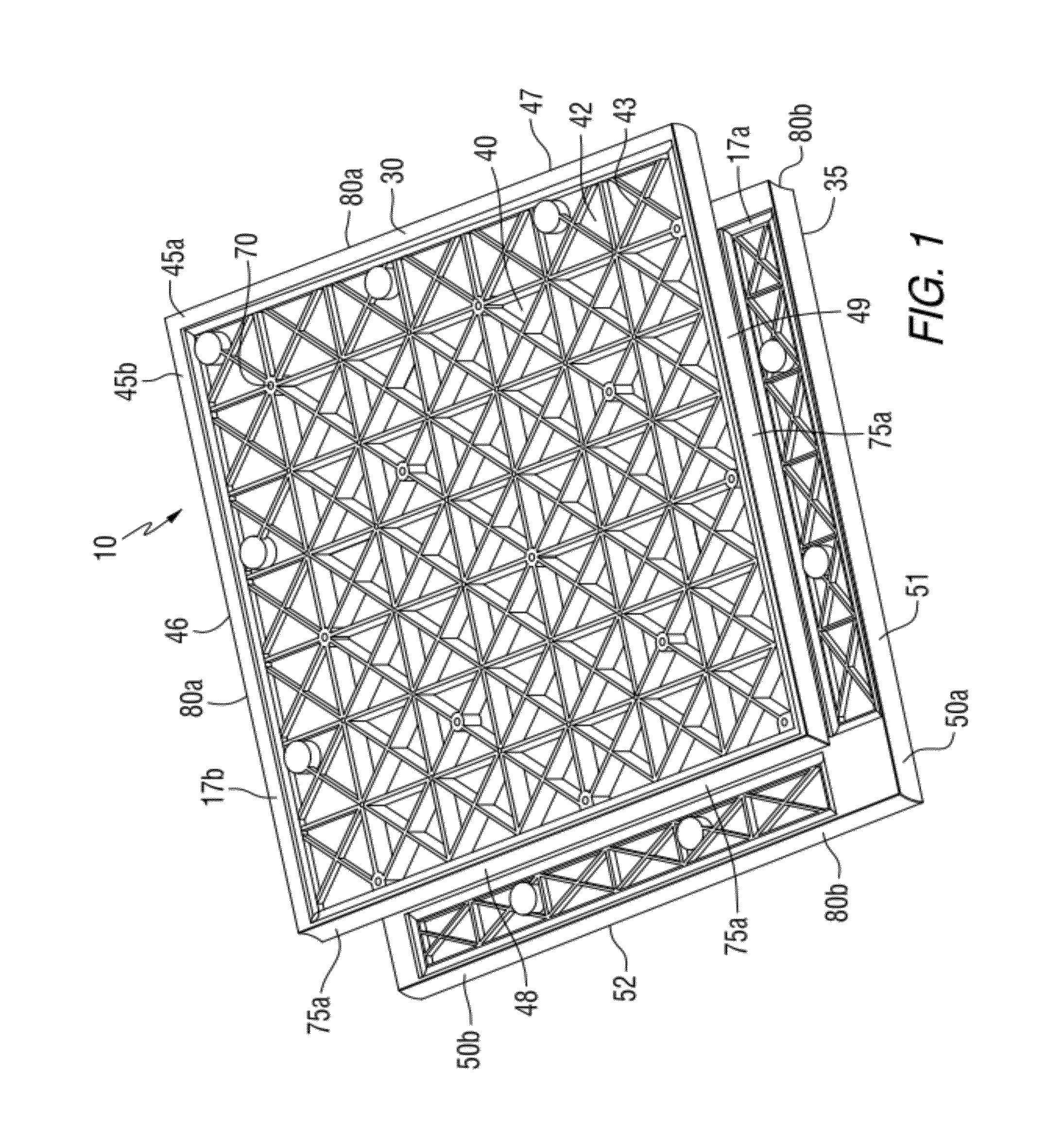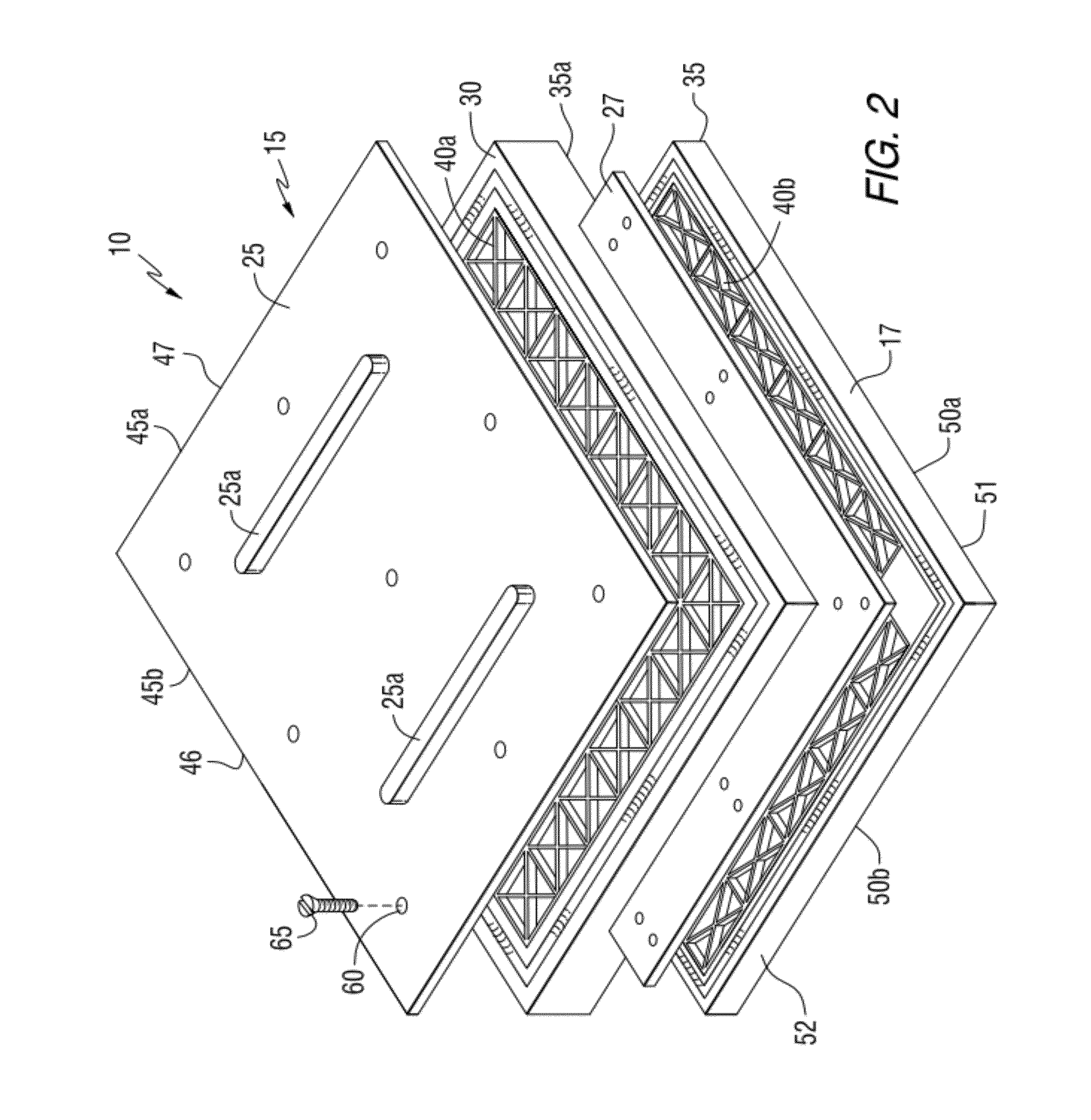Heavy duty modular flooring and roadway device
a technology of modular flooring and roadway devices, applied in the direction of roads, single unit paving, roads, etc., can solve the problems of time-consuming and laborious removal of planks, affecting the maintenance of roads, and requiring cranes and other equipment, so as to achieve strength and durability.
- Summary
- Abstract
- Description
- Claims
- Application Information
AI Technical Summary
Benefits of technology
Problems solved by technology
Method used
Image
Examples
Embodiment Construction
[0022]Referring to FIG. 1, an individual floor mat 10 of the invention is comprised of main body component 15 and flange components 17a, 17b. Main body 15 and flanges 17a, 17b and are constructed as one unit from a single piece of material. Main body 15 and flanges 17a, 17b have a generally upper planar surface 30 and main body 15 and flanges 17a, 17b have a generally planar lower surface 35 (not shown). Flanges 17a and 17b are positioned so that they are mutually offset relative to each other, thereby resulting in overhang or flange surfaces 45a, 45b on two adjacent peripheral edges 46 and 47 and flange surfaces 50a, 50b on two adjacent peripheral edges 51 and 52. Each of the modular floor mats 10, with the exception of the interchangeable aluminum cam 20 locks and top covers 25a and 25b, as hereinafter described in greater detail, is preferably formed as a one-piece unit from a single piece of material (FIG. 2). Modular floor mats 10 are provided for use as part of an interlocking...
PUM
| Property | Measurement | Unit |
|---|---|---|
| size | aaaaa | aaaaa |
| area | aaaaa | aaaaa |
| core area | aaaaa | aaaaa |
Abstract
Description
Claims
Application Information
 Login to View More
Login to View More - R&D
- Intellectual Property
- Life Sciences
- Materials
- Tech Scout
- Unparalleled Data Quality
- Higher Quality Content
- 60% Fewer Hallucinations
Browse by: Latest US Patents, China's latest patents, Technical Efficacy Thesaurus, Application Domain, Technology Topic, Popular Technical Reports.
© 2025 PatSnap. All rights reserved.Legal|Privacy policy|Modern Slavery Act Transparency Statement|Sitemap|About US| Contact US: help@patsnap.com



